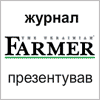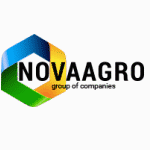Ukrainian agriculture faces logistical challenges, but remains among the world leaders

Ukrainian agriculture faces numerous challenges due to logistical problems, the occupation and mining of a large part of the territory, but remains among the world leaders almost a year after the Russian invasion.
The large-scale consequences of the war for agriculture have become profound and will probably continue for several more years, Pavlo Koval, general director of the Ukrainian Agrarian Confederation, tells EFE. The beginning of the war "clipped the wings" of the industry, which had been developing rapidly for the past 5–7 years, with a record 106 million tons harvested in 2021.
A year later, approximately 20% of agricultural land is under Russian occupation, requiring demining or reclamation due to the damage caused.
"The most affected are some of the most developed agricultural regions, for example, the north of Luhansk region or Zaporizhzhia region, where the largest production of winter wheat is located," says Koval.
Harvesting has become dangerous, and there are numerous cases of destruction of agricultural machinery by mines planted in the fields. In addition, thousands of agricultural specialists were drafted into the army.
Estimates of the direct physical damage caused to the sector vary widely, from $9 billion to $40 billion (approximately €8.5 million to €38 million), while losses in lost profits and markets are difficult to quantify.
Double pressure on farmers
According to Koval, Ukrainian farmers are under the double pressure of falling prices for products on the domestic market and a rapid increase in the prices of resources needed to continue production.
"For example, a ton of urea fertilizer now costs UAH 32,000 (about EUR 825), which is prohibitively expensive for many farmers. This means that soil productivity will decline in the medium term."
Farmers also face drastic decisions regarding which crops to switch to, depending on price stability and logistics. About 30% of the corn remains in the fields because it doesn't make economic sense to harvest it, while soybeans may become a more popular crop with farmers.
Logistics costs have increased dramatically, sometimes five to six times, because, for example, the cost of shipping a ton from the centre of Ukraine to the Romanian port of Constanta has increased from $30 to $180.
Export
Efforts were made to increase exports through ports on the Danube and across the western border to the European Union, reaching 2.5 million tons per month. However, the Black Sea ports remain the main export route of Ukraine.
"Under the grain export initiative supported by the UN, 16.5 million agricultural products have been exported, while, for example, three Polish ports can export only 8 million tons annually," explains Koval.
"Farmers are mentally prepared to make quick decisions in such conditions," says Koval, who praises their work and emphasizes the need for strategic leadership from the state.
The expert also highlights that the sector continues to play a key social role, as most producers have been able to pay rent to landowners, many of whom live in rural areas.
Despite the war, Ukraine still remains a leading agricultural country
Despite the blow, Ukraine maintains its position among other agrarian countries of the world. For example, with more than twenty million tons of wheat harvested in 2022, it is currently the ninth largest producer, ahead of Argentina and Turkey.
"While Ukraine's priority is to ensure that its citizens can afford to buy enough food, its role as the 'world's granary' is also very important for millions of people around the world who depend on constant food supplies from Ukraine," Pavlo Koval is convinced.
He emphasizes to EFE that Ukraine appreciates the help received from all over the world, including Spain, where, by the way, the first ships with Ukrainian grain on the way to Africa arrived after the resumption of exports during the current Russian invasion.
IC UAC according to EFEAGRO and Rostyslav Averchuk
- 1867 reads








